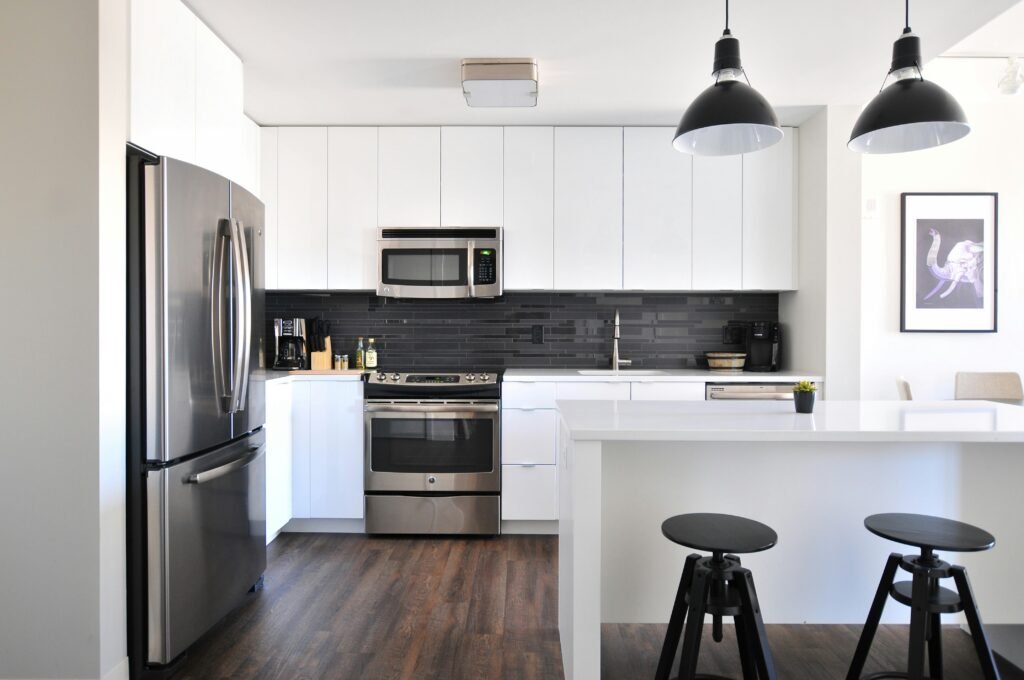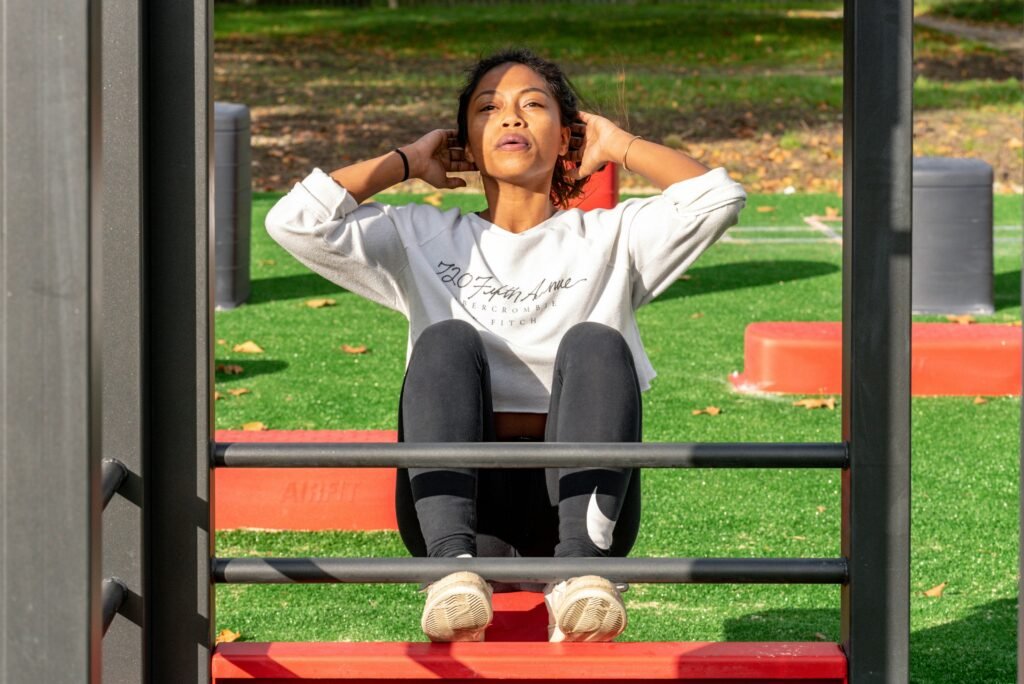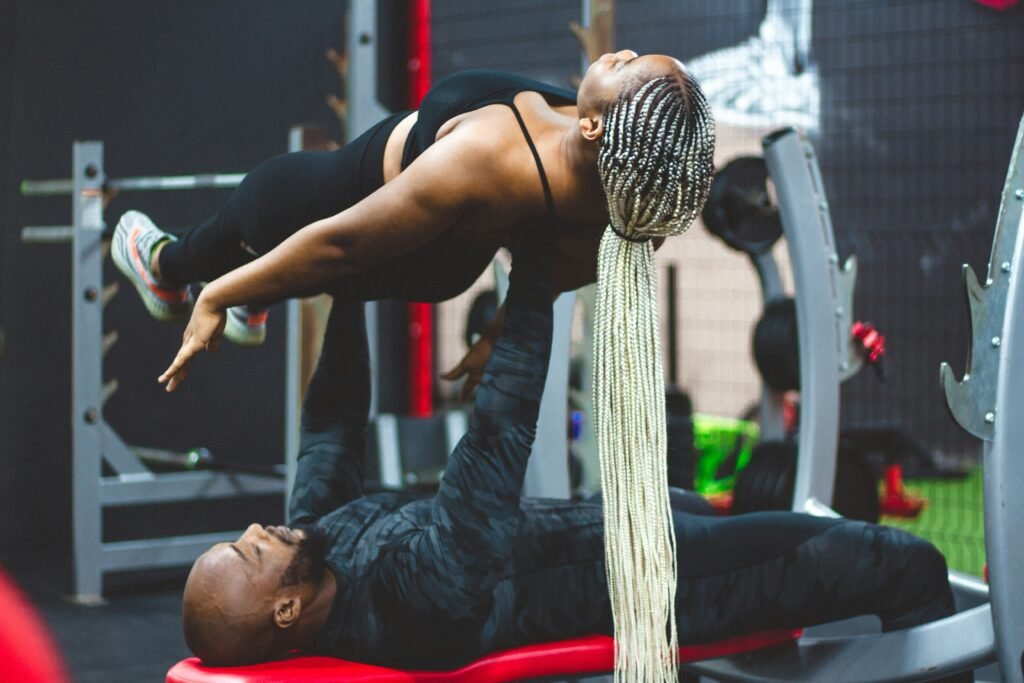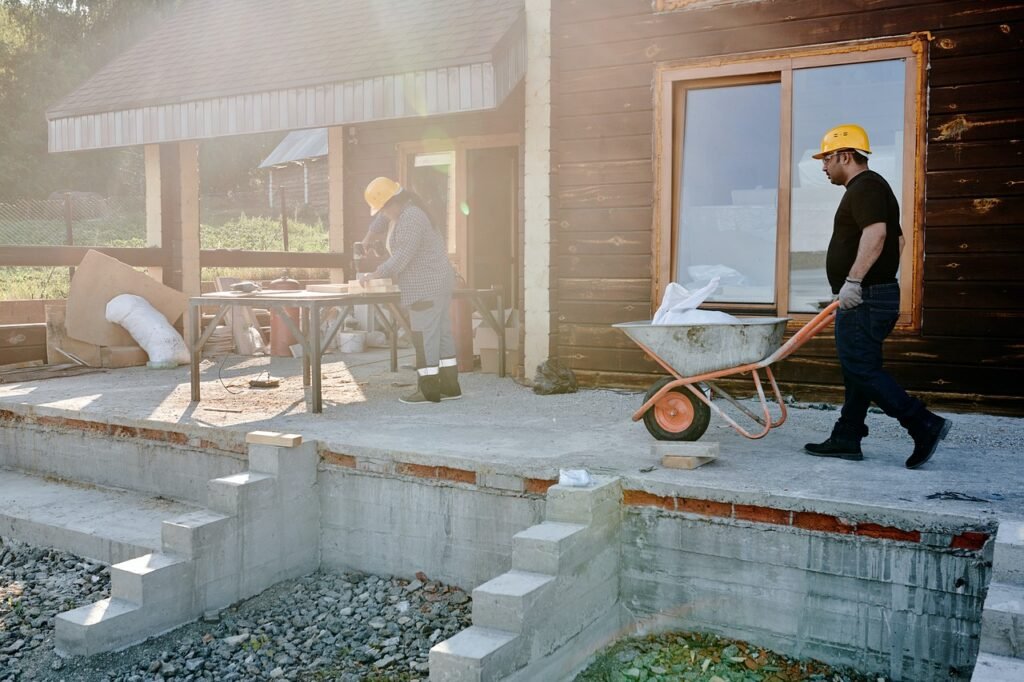
Are you tired of spending countless hours at the gym or investing in expensive fitness equipment? Look no further! This article will introduce you to the world of getting fit with minimal equipment. Discover how you can achieve an effective and fulfilling workout routine with just a few basic tools. Say goodbye to the complexities and costs of traditional fitness methods and say hello to a simple, efficient, and budget-friendly way of getting in shape. Get ready to revolutionize your fitness journey with these effective workouts that require only limited equipment.

This image is property of images.unsplash.com.
Bodyweight exercises
Push-ups
Push-ups are a classic bodyweight exercise that targets your chest, shoulders, triceps, and core muscles. To perform a push-up, start in a high plank position with your hands shoulder-width apart. Lower your chest down towards the ground while keeping your back straight. Push back up to the starting position, engaging your chest and arm muscles. You can modify push-ups by performing them on your knees or against a wall if needed.
Squats
Squats are a compound exercise that engages your glutes, quadriceps, hamstrings, and core. To do a squat, stand with your feet shoulder-width apart. Bend your knees and lower your hips as if you’re sitting back into a chair. Keep your chest lifted and your weight in your heels. Push through your heels to stand back up, engaging your leg muscles. Squats can be made more challenging by holding weights, such as water bottles or books.
Lunges
Lunges are another excellent bodyweight exercise that targets your glutes, quadriceps, hamstrings, and calf muscles. To perform a lunge, start by standing with your feet hip-width apart. Step one foot forward into a lunge position, keeping your knee at a 90-degree angle. Push through your front heel to bring your back leg forward, alternating legs. Lunges can be modified by performing them with a static hold or adding weights for resistance.
Planks
Planks are a fantastic exercise for strengthening your core muscles, including your abs, back, and shoulders. To do a plank, start in a high plank position with your hands directly under your shoulders and your body in a straight line. Engage your core muscles and hold this position for a specified amount of time. You can also modify planks by performing them on your elbows or incorporating side planks for added challenge.
Resistance bands workouts
Bicep curls
Resistance bands are a versatile piece of equipment that can be used for a variety of exercises. To perform bicep curls with resistance bands, step on the band with your feet shoulder-width apart. Hold the ends of the band in each hand with your palms facing forward. Keeping your elbows close to your sides, curl your hands towards your shoulders, engaging your bicep muscles. Slowly lower the band back down and repeat.
Tricep extensions
Tricep extensions with resistance bands target the muscles at the back of your upper arms. Start by stepping on the resistance band with one foot and hold the other end with one hand. Extend your arm overhead with the band behind your head. Keeping your upper arm still, straighten your arm, extending it towards the ceiling. Slowly lower the band back behind your head and repeat.
Shoulder presses
Resistance bands can also be used for shoulder presses to target your shoulder muscles. Start by standing on the resistance band with your feet shoulder-width apart. Hold the ends of the band at shoulder level with your palms facing forward. Press the band overhead, fully extending your arms. Slowly lower the band back down to shoulder level and repeat.
Squats
Resistance bands can provide added resistance for squats, making them more challenging. Step on the band with your feet shoulder-width apart and hold the ends of the band at shoulder level. Lower down into a squat position, keeping your chest lifted and your weight in your heels. Push through your heels to stand back up, engaging your leg muscles. The resistance from the band adds an extra challenge to the exercise.

This image is property of images.unsplash.com.
Jumping rope cardio
Basic jump
Jumping rope is a highly effective and convenient cardio exercise that can be done at home. Start by holding the handles of a jump rope with your hands. Begin jumping, keeping your feet together and using your wrists to rotate the rope. Maintain a steady rhythm and land softly on the balls of your feet. This basic jump is a great way to increase your heart rate and burn calories.
Alternate foot jump
Alternate foot jump is a variation of jumping rope that involves jumping on one foot at a time. Start by jumping with your right foot while keeping your left foot slightly lifted off the ground. After a few jumps, switch to your left foot while keeping your right foot lifted. This exercise challenges your balance and coordination while providing a cardiovascular workout.
High knees
High knees are a dynamic cardio exercise that helps improve your lower body strength and stability. Stand with your feet hip-width apart and start jogging in place. As you jog, bring your knees up towards your chest one at a time, alternating between legs. Engage your core and swing your arms for added momentum. Aim to bring your knees as high as possible for maximum benefit.
Double unders
Double unders are an advanced jumping rope exercise that involves rotating the rope twice for each jump. Start with the basic jump and gradually increase the speed of the rope. As the rope rotates, jump slightly higher and faster to allow it to pass under your feet twice. Double unders require coordination and timing, making them a challenging yet rewarding cardio exercise.
Outdoor workouts
Running
Running is a simple yet effective outdoor workout that allows you to enjoy the fresh air and explore your surroundings. Whether you prefer jogging leisurely or sprinting for an intense workout, running helps improve cardiovascular health, builds leg strength, and burns calories. Start by finding a safe and suitable route, warm up properly, and gradually increase your running duration and intensity over time.
Cycling
Cycling is a low-impact outdoor workout that provides cardiovascular benefits and strengthens your leg muscles. Whether you use a traditional bicycle or a stationary bike, cycling allows you to cover longer distances while enjoying your surroundings. Adjust the intensity by changing gears or incorporating uphill routes to challenge yourself.
Hiking
Hiking is a fantastic outdoor activity that not only provides a great workout but also allows you to connect with nature. Explore local trails or seek more challenging terrains to engage your leg muscles, increase endurance, and improve overall fitness. Remember to wear appropriate footwear, carry water, and be mindful of your surroundings for a safe and enjoyable hiking experience.
HIIT circuits
High-Intensity Interval Training (HIIT) circuits can be done outdoors and offer a time-efficient and effective way to improve cardiovascular fitness and burn calories. Create a circuit by combining exercises such as burpees, squat jumps, mountain climbers, and push-ups. Perform each exercise at a high intensity for a short period, followed by a brief rest before moving on to the next exercise. Repeat the circuit for a set number of rounds to complete a challenging workout.

This image is property of images.unsplash.com.
Yoga and Pilates routines
Sun salutations
Sun salutations are a series of yoga poses that provide a full-body stretch, improve flexibility, and promote mindfulness. Start by standing tall and raise your arms overhead, then fold forward to touch your toes. Step back into a plank position, lower into a push-up, and transition into upward-facing dog. From there, lift your hips into downward-facing dog, and step or jump your feet forward to return to the standing position. Repeat the sequence several times to warm up the body and improve overall mobility.
Bridge pose
Bridge pose is a Pilates exercise that targets your glutes, hamstrings, and lower back muscles. Lie on your back with your knees bent and feet flat on the ground. Place your arms by your sides with your palms facing down. Press your feet into the ground and lift your hips upward while engaging your glutes and core. Hold the position for a few breaths, then slowly lower your hips back down. Repeat bridge pose for several repetitions to strengthen your posterior chain.
Plank variations
Planks can be modified in various ways to target different muscle groups and increase the challenge. Start with a traditional high plank, supporting your body weight on your hands and toes. Engage your core and hold the position for a set amount of time. To challenge yourself further, try side planks by resting on one forearm and lifting your hips off the ground. You can also incorporate variations such as plank jacks or mountain climbers to engage more muscles and elevate your heart rate.
Leg lifts
Leg lifts are a Pilates exercise that focuses on strengthening your abdominal muscles. Lie on your back with your legs extended and arms by your sides. Engaging your core, lift both legs off the ground, keeping them straight. Slowly lower your legs back down towards the ground without touching it, then lift them again. Repeat leg lifts for several repetitions, feeling the burn in your abs as you work to maintain control and stability.
Improvised weights
Water bottles
Water bottles can be used as makeshift weights for strength training exercises. Fill them with water to your desired weight and hold one in each hand. Perform exercises such as bicep curls, shoulder presses, or tricep extensions while holding the water bottles as resistance. The added weight challenges your muscles and helps build strength.
Books
Books can be used to add resistance to exercises or act as weights for strength training. For example, hold a book in each hand and perform squats or lunges to increase the difficulty. Alternatively, lie on your back and hold a book with both hands to perform chest presses or flyes. Experiment with different books to find a weight that challenges you without compromising your form.
Cans
Cans of food, such as beans or soup, can serve as smaller weights to add resistance to exercises. Hold a can in each hand and perform exercises such as bicep curls, tricep kickbacks, or lateral raises. The cans’ weight may be lighter than other improvised weights, but they can still provide a challenging workout when used correctly.
Backpack filled with heavy items
If you have a sturdy backpack, you can fill it with heavy items such as books or water bottles to create a weighted vest or a backpack weight. Wear the backpack during exercises such as squats, lunges, or push-ups to increase the resistance. Be cautious not to overload the backpack and listen to your body to ensure you’re not straining or risking injury.
Stair workouts
Step-ups
Step-ups target your lower body muscles, including your glutes, quadriceps, and hamstrings. Find a sturdy step or staircase and step onto it with one foot, pushing through your heel as you lift your body up. Step back down and repeat with the other foot. Increase the intensity by adding weights or increasing the speed of the step-ups.
Stair sprints
Stair sprints are an excellent way to elevate your heart rate and improve cardiovascular endurance. Find a set of stairs with several steps and sprint up them as fast as you can. Walk or jog back down to recover and then repeat for a set number of rounds. The incline provided by the stairs adds an extra challenge and works your leg muscles more than running on a flat surface.
Incline push-ups
Incline push-ups are a modification of the traditional push-up that can be done using a sturdy staircase. Place your hands on the edge of a step or the railing, walk your feet away from the stairs, and lower your chest towards the step. Push back up to the starting position, engaging your chest and arm muscles. Incline push-ups are a beginner-friendly variation that helps build strength before progressing to a full push-up.
Tricep dips
Tricep dips target the muscles at the back of your arms and can be done using a sturdy step or a bench. Sit on the edge of the step with your hands placed shoulder-width apart, fingers facing forward. Slide your hips off the step and lower yourself down by bending your elbows. Push yourself back up using your tricep muscles. Tricep dips can be made easier by bending your knees or more challenging by straightening your legs.
Resistance training with furniture
Chair squats
Chair squats are a modified version of squats that use a chair for support and stability. Stand in front of a chair with your feet hip-width apart, then lower yourself down towards the chair as if you’re sitting back into it. Keep your chest lifted and your weight in your heels. Once you feel the chair touch your glutes, push through your heels to stand back up. Chair squats are a great option for beginners or those with mobility issues.
Bench press (with a couch)
If you have a sturdy couch or bench at home, you can use it to simulate a bench press exercise. Lie down on the couch with your feet flat on the floor and your knees bent. Hold a weighted object, such as water bottles or books, in each hand. Extend your arms upward, then slowly lower the weights towards your chest, keeping your elbows at a 90-degree angle. Push the weights back up to the starting position, engaging your chest and arm muscles.
Dips using a sturdy table
Sturdy tables can be used to perform tricep dips, targeting the muscles at the back of your arms. Sit on the edge of the table with your hands placed shoulder-width apart, fingers facing forward. Slide your hips off the table and lower yourself down by bending your elbows. Push yourself back up using your tricep muscles. Adjust the difficulty by walking your feet closer or farther away from the table.
Coffee table curls
Coffee table curls are a variation of bicep curls that use a coffee table as a weight. Hold onto the edges of the coffee table with your palms facing up. Keeping your elbows close to your sides, curl the coffee table towards your chest, engaging your bicep muscles. Slowly lower the coffee table back down and repeat. Coffee table curls can be done with one hand or both hands for added challenge.
Cardio workouts at home
Running in place
Running in place is an effective way to get your heart rate up and burn calories without leaving your home. Stand with your feet hip-width apart and lift your knees up one at a time, alternating between legs. Swing your arms back and forth to mimic the motion of running. Increase your speed for a more challenging cardio workout.
Burpees
Burpees are a full-body exercise that combines strength training and cardiovascular conditioning. Start in a standing position, then squat down and place your hands on the ground. Kick your feet back into a plank position, perform a push-up, and then jump your feet back up towards your hands. Stand up and jump with your arms reaching overhead. Repeat the full sequence for a challenging cardio workout.
Mountain climbers
Mountain climbers are a dynamic exercise that targets your core, shoulders, and legs. Start in a high plank position with your hands directly under your shoulders. Engage your core and bring one knee towards your chest while keeping the other leg extended. Quickly switch legs, alternating between right and left in a running motion. Increase the speed for a high-intensity cardio workout.
Jumping jacks
Jumping jacks are a classic cardio exercise that engages your whole body and gets your heart rate up. Start with your feet together and your arms by your sides. Jump your feet out to the sides while simultaneously raising your arms overhead. Jump back to the starting position and repeat. Increase the pace to elevate the intensity of the exercise.
HIIT (High-Intensity Interval Training) workouts
Sprints
Sprints are an intense form of cardio exercise that can be done outdoors or on a treadmill. Start by jogging or running at a moderate pace for a short distance to warm up. Once you’re warmed up, sprint as fast as you can for a set distance or time. Recover by walking or jogging at a slower pace, then repeat the sprint and recovery intervals for a predetermined number of rounds.
Burpees
Burpees are a challenging full-body exercise that can also be incorporated into a HIIT workout. Perform burpees by starting in a standing position, then squatting down and placing your hands on the ground. Kick your feet back into a plank position, perform a push-up, and then jump your feet back up towards your hands. Stand up and jump with your arms reaching overhead. Repeat the burpees for a set duration or number of repetitions, alternating with periods of rest or other exercises.
Squat jumps
Squat jumps are a plyometric exercise that combines squats with explosive jumps. Start by standing with your feet shoulder-width apart. Lower down into a squat position, then explode upward, jumping as high as you can. Land softly back into a squat and immediately jump again. Repeat the squat jumps for a set number of repetitions or time intervals, alternating with periods of rest or other exercises.
High knees
High knees are a dynamic exercise that can be incorporated into a HIIT workout. Stand with your feet hip-width apart and jog in place. Bring your knees up towards your chest as high as you can, alternating between legs. Swing your arms for added momentum and increase the speed for a more intense cardio workout. Perform high knees for a set duration or number of repetitions, alternating with periods of rest or other exercises.
In conclusion, getting fit doesn’t always require expensive gym memberships or fancy equipment. By utilizing bodyweight exercises, resistance bands, jumping rope, outdoor workouts, yoga and Pilates routines, improvised weights, stair workouts, resistance training with furniture, cardio workouts at home, and HIIT workouts, you can achieve a comprehensive and effective workout routine from the comfort of your own home. Stay consistent, challenge yourself, and remember to prioritize safety and proper form in your workouts. With dedication and determination, you can achieve your fitness goals and improve your overall health and well-being.


